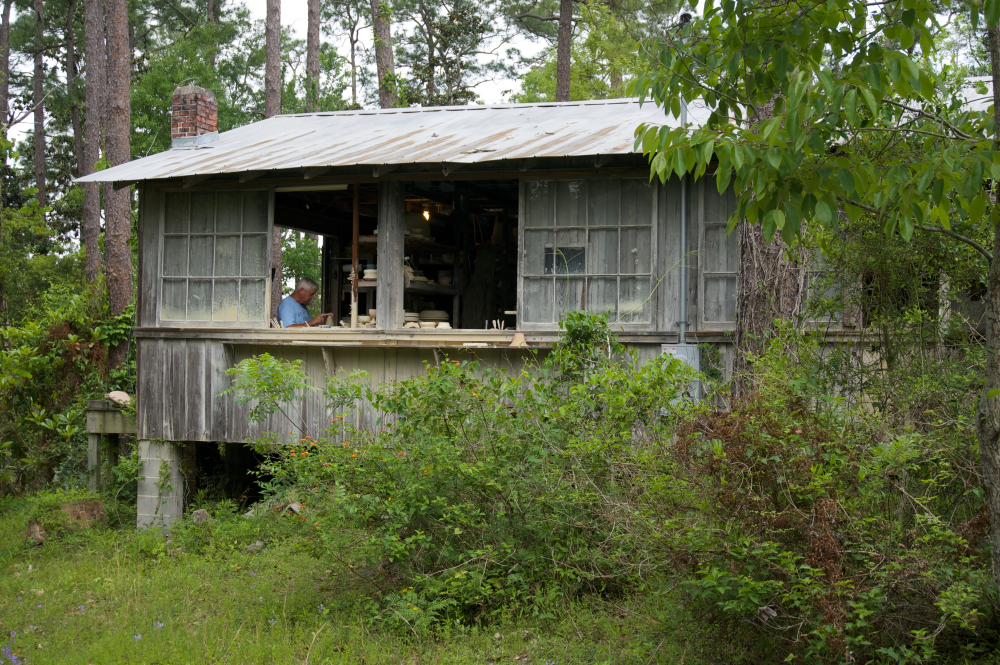We went to dig clay with our parents. We had bees, so we went up there to take care of the bees, too, when we were old enough. Everything [Peter] did, whether it was the pottery, or he was feeding us from the sound in front, was our world. But the center of it was pottery.” - Marjorie Ashley
When you walk into the showroom of Shearwater Pottery in Ocean Springs, Mississippi, there is a peculiar sound coming from the ceramic figurines and dishware. Little pings and pops, almost like wind chimes, continuously fill the space. Beth Ashley, granddaughter of Peter Anderson, one of the three brothers who made Shearwater the legend it is today, explains, “[the pottery] does that all its life, but [more so] when it’s new, and certain glazes do it more.” Today the showroom is filled with utilitarian ware like dinner sets, as well as decorative tiles and figurines (such as pirates, animals, and fairy tale characters). In case you didn’t realize it while driving up the tree-lined gravel driveway that hugs the Gulf Coast to the Shearwater showroom, the tinging of the pottery makes it even more apparent that this is a magical place.
Beth’s mother and Peter’s daughter, Marjorie Ashley tells the history of the Shearwater property and her experiences growing up there.
“The first showroom was built in 1928, and that’s when Peter, who was the oldest brother, opened for business. The old showroom was...I remember people calling it ‘the shack,’ and I didn’t like it being called [that]. But it did kind of look like a shack from the front.”
Marjorie grew up on the twenty-four acres that comprise the Shearwater showroom; the cottages where clay is formed, painted, and fired; and the main house and living cabins where Marjorie’s grandparents (George Walter Anderson and Annette McConnell Anderson, who supported their son Peter in opening the business) lived. George and Annette’s three sons: Walter, Mac, and Peter also raised their families and worked on the property. While family members often try their hand at many aspects of the pottery’s creation, specific roles fell naturally to those who were proficient in them. Peter was the master potter, while Walter and Mac often worked in the annex, where under-glazed cast-ware pottery, or pottery that is adorned with hand-painted designs, is decorated.
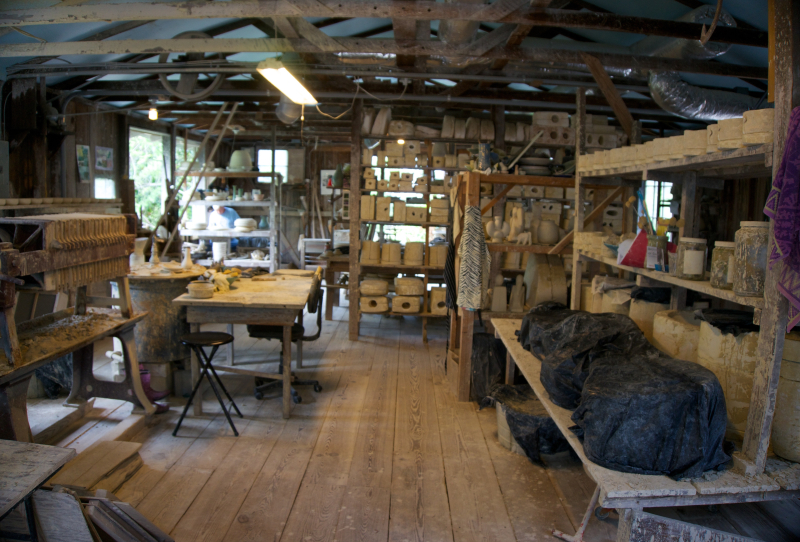
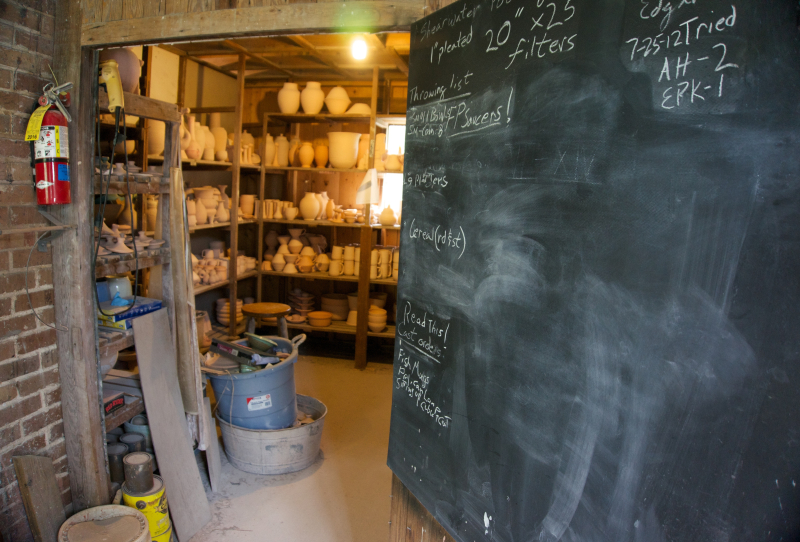
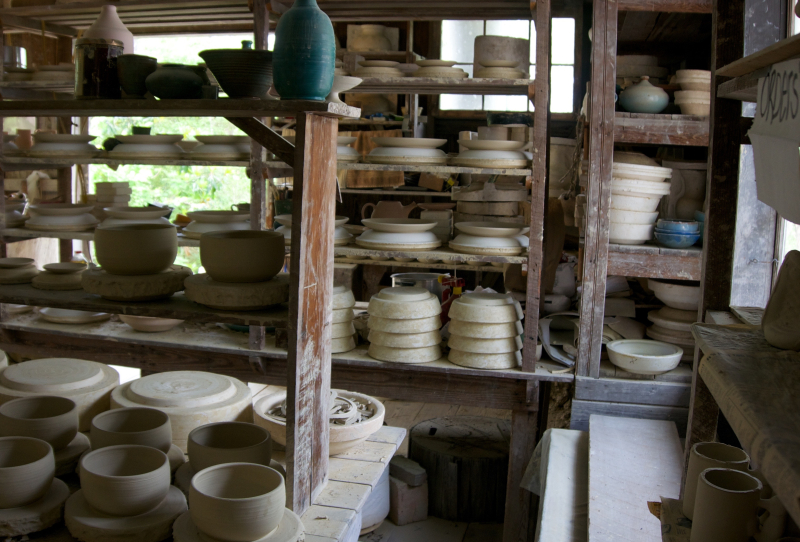
Marjorie described growing up on the Shearwater grounds:
“[M]y father was the potter who kept this place going through thick and thin. So, the pottery was our world as soon as we recognized ‘world’. When the firings came out it was a very big deal, and my father had to get up very early in the morning, and lunch was taken out to him because he couldn’t leave the kiln till it was finished. We went to dig clay with our parents. We had bees, so we went up there to take care of the bees, too, when we were old enough. Everything [Peter] did, whether it was the pottery, or he was feeding us from the sound in front, was our world. But the center of it was pottery.”
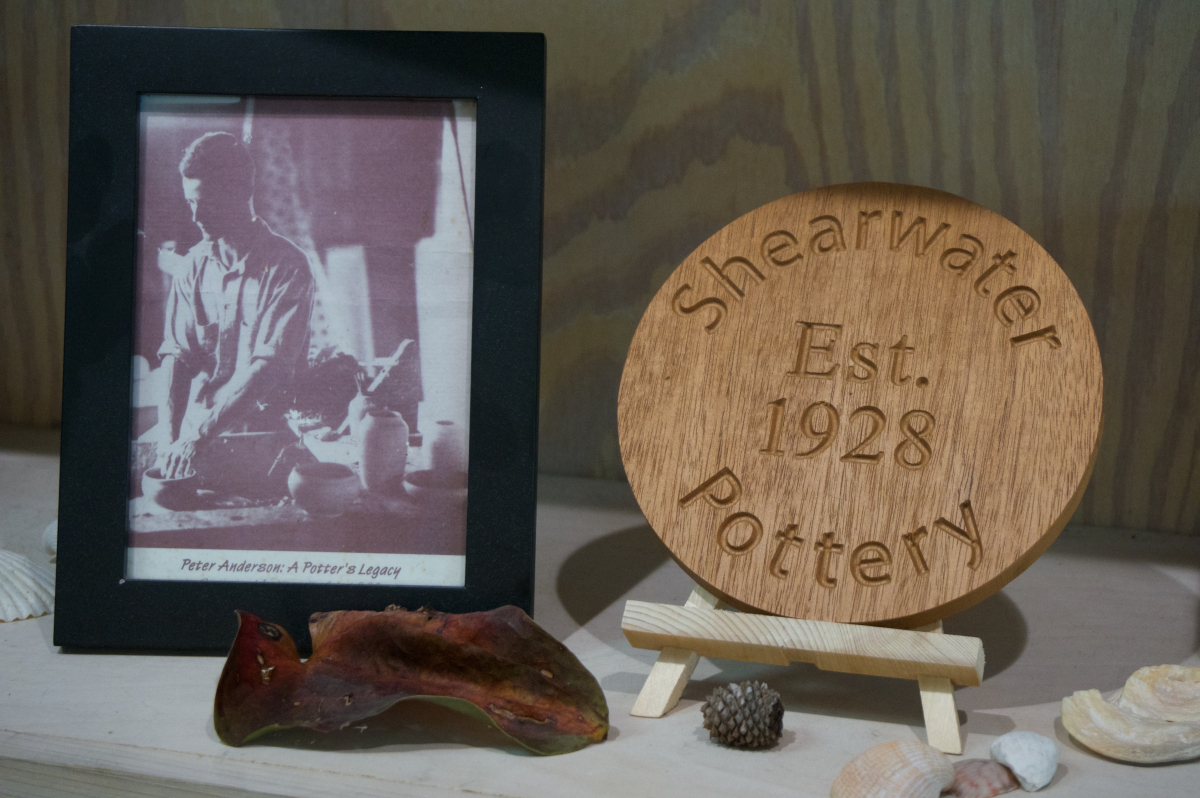
Many family members also lived on the property where they worked, as Marjorie explains:
“My grandmother lived here, and then we lived at the front house, and that was about it for that time on when I was growing up. So, sometimes it didn’t matter whether we were eight or nine [years old], we would come wait on the showroom. We painted figurines and trimmed and did things like that when we were coming up as kids. Everybody was a part of it that lived out here.”

Over time, Shearwater became a Mississippi legend and had a successful, family-run business to show for it. Once each family member’s role in that business became clear, the operation ran smoothly, with Peter creating most of the figures that would make the molds, which would be used in creating the cast-ware. Marjorie explains the painting process:
“Walter and Mac, they had a little book, and they wrote down how they wanted [the figurines and cast-ware] painted, and they were all painted the same. My mother, Pat, the ladies in the family and some of their friends worked out there [in the annex where painting occurs], so better than just saying, ‘Here, paint this,’ there were guidelines for what they were to do.”
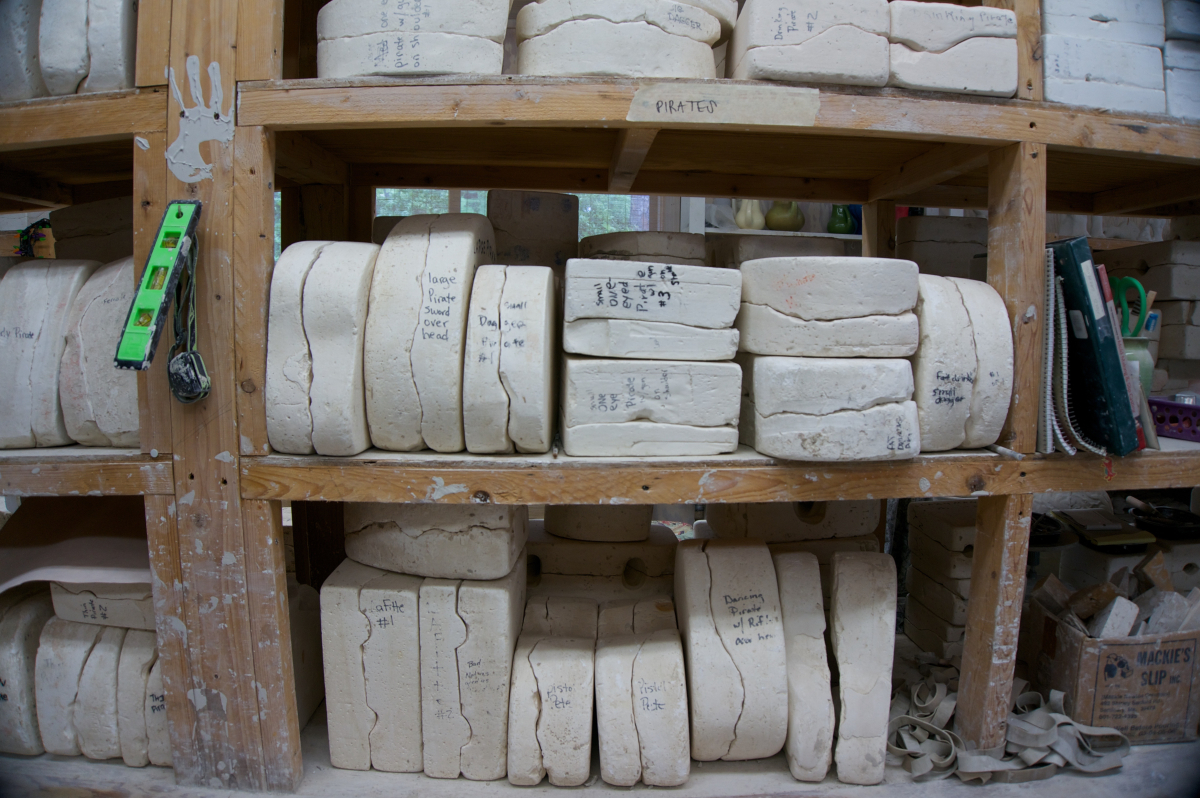
When Hurricane Katrina hit in 2005, the industry could have easily met its end. Yet the family operation persevered and, through the strength of the gulf coast community, found rebirth in the destruction.
These molds and guidelines for painted cast-ware would serve to keep the legacy of Shearwater alive and consistent, even after the three brothers no longer ran the operation. Yet, all of this was threatened in 2005 when Hurricane Katrina so profoundly affected the lives and livelihoods of many on the Gulf Coast. Shearwater faced devastating destruction to its showroom, workspaces, and much of the property. But the family was determined to re-open quickly, temporarily moving the location to what used to be the town of Ocean Springs’ public high school, and what is now, the Mary C. O’Keefe Cultural Center of Arts and Education.
The transition to the O’Keefe center was not perfect, as Marjorie explains:
“Well, I was in my senior high school homeroom selling pottery, which I got a little kick out of for a while...and I’m sure it was difficult for the potter because it was different from what his whole life had been, with his wheel, and his kiln, and his glaze. All his materials were gone, so he had to start that again...We got all the molds, and fit them back with their partners, because you need to be sure you get each partner that goes with it, and some of them have more than one piece to the partnership. So it wasn’t that easy, but the molds were gotten back...[O]n December 16 we had our first official firing [after Katrina]. I think we got a couple pieces that were decent. But, it got better as time went by. And that was in December, [a]nd it took until [March] 2007 [to relocate back to Shearwater]. All the work buildings were done first, and then the showroom was completed.”
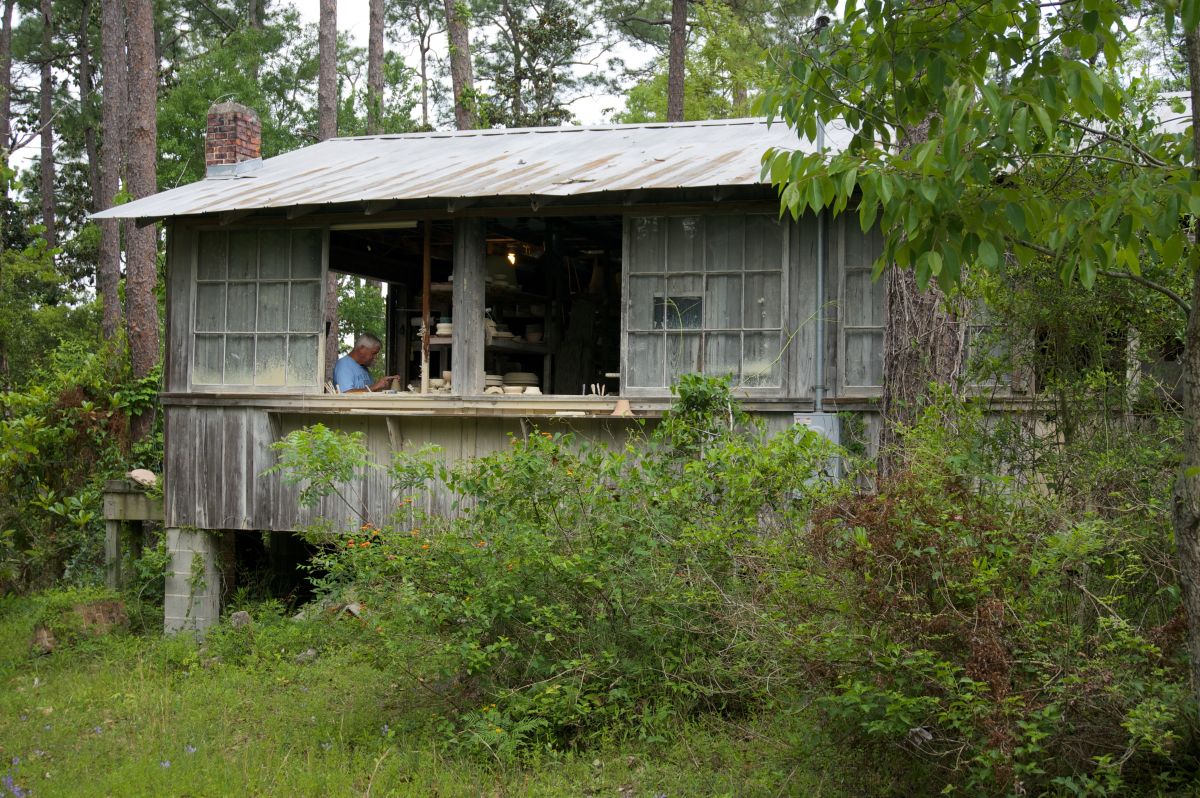
Approaching the Shearwater property, the work cabins are the first buildings you see on your right, which maintain their original structure. The gallery, however, appears brand new and could hardly be called “the shack” today. While the gallery is laid out in its original floor plan (plus the addition of an extra wing attached to the main room), it is modern and sleek, with large windows allowing visitors to gaze out over the natural landscape that offered inspiration to the Anderson family. Most of the figurines in the gallery were made from molds created by either Walter, Peter, or Mac, and the thrown cast-ware pieces are iconically “Shearwater.” You will also find original artwork from members of the Anderson family, all descendants of the three brothers.
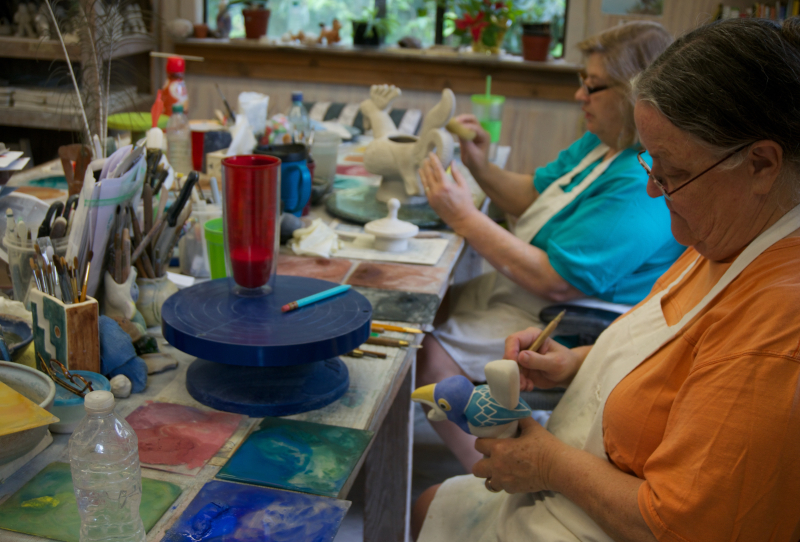
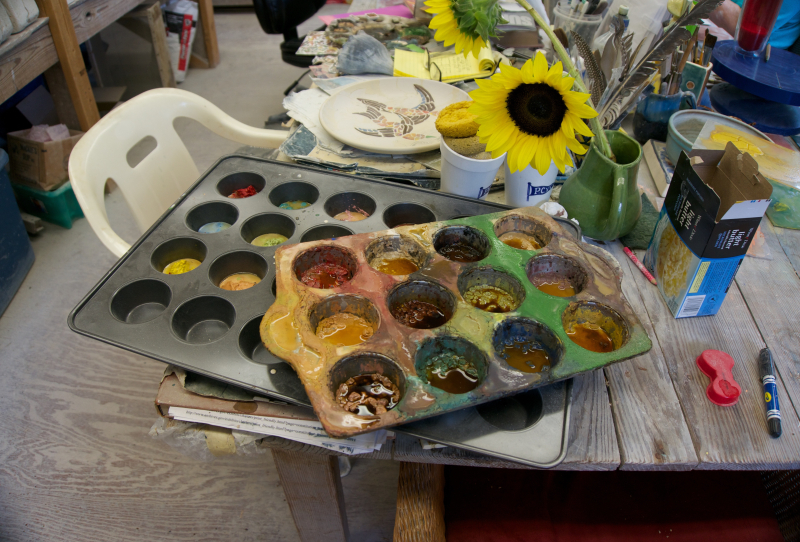
Walking between the work cabins and the showroom, Beth talks about a family lesson passed down from her grandfather Peter, to her uncle Jim, who is the current Master Potter:
“With this beautiful area around us, Jimmy will sometimes get stuck on what to make, and he was telling me the other day, he said, ‘Your grandfather said ‘Look to nature and you’ll figure out the shape of your pot.’” So, like, Pop (Peter) would design the pinecone goblets, and you’ll find the name reflects the shape that’s in nature. Poppa looked to nature for his shapes.”
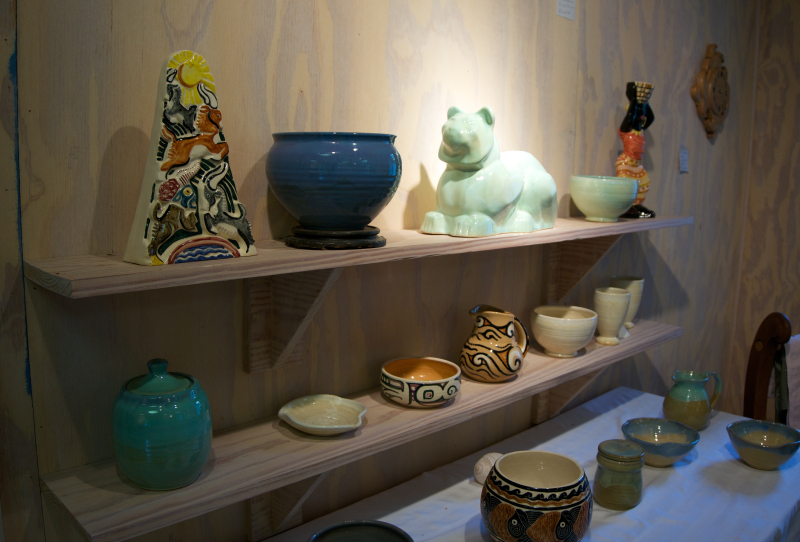
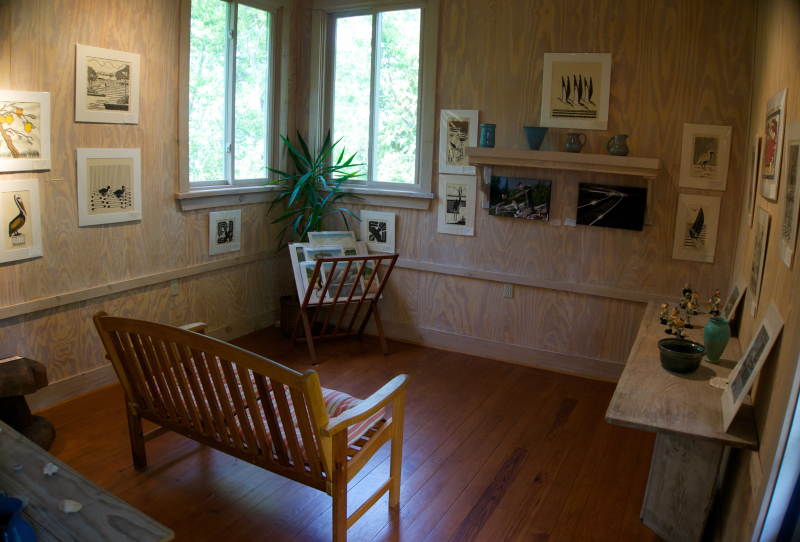
Natural inspiration plays a large part in the Shearwater aesthetic. Many of the figures and cast-ware feature natural decorative elements, and nature serves as a major theme in the paintings and drawings of celebrated Mississippi artist Walter Anderson, which are on view at the Walter Anderson Museum of Art, also in Ocean Springs.
Since Peter Anderson opened Shearwater Pottery in 1928, the business has faced its fair share of difficulties. When Hurricane Katrina hit in 2005, the industry could have easily met its end. Yet the family operation persevered and, through the strength of the gulf coast community, found rebirth in the destruction. By creating a consistent artistic product, while remaining open to creative evolution, Shearwater Pottery has created a rich cultural legacy in Mississippi. Families throughout the South,and the country, treasure their Shearwater dinner sets, or their collectable figurines, and by doing so they carry on the spirit of the Anderson family.

